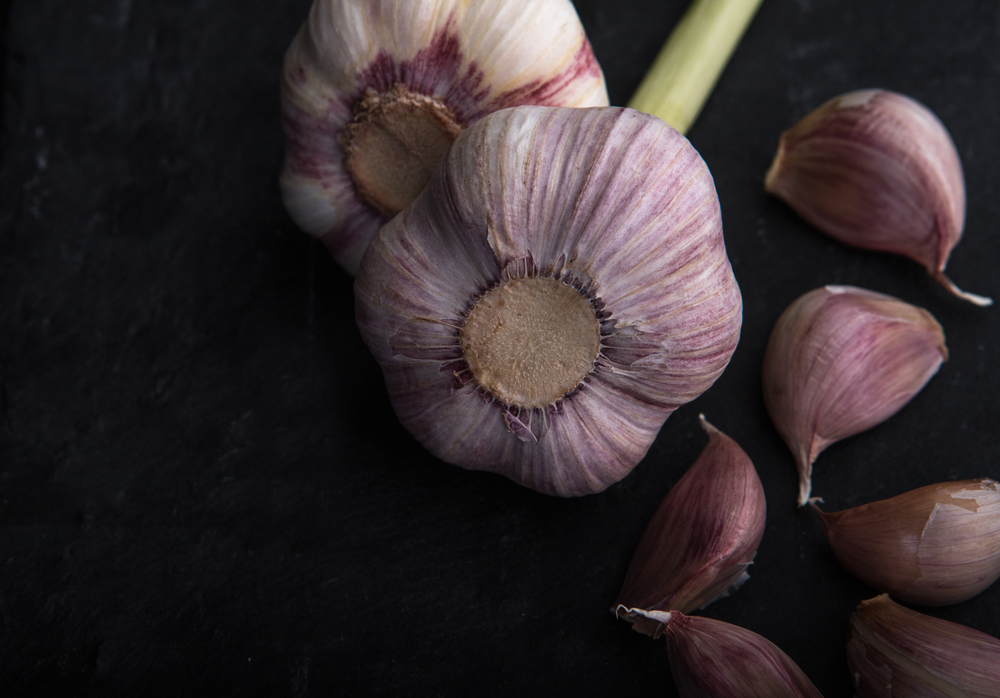Four kinds of garlic to know and some ways to use them.
Three Cornered Garlic
A wild plant which appears in early spring and is often found in roadside verges, at the edges of fields or you may have some in your garden. It is easy to identify as each plant has three or four long, slender, triangular leaves and one stalk with white and green striped bell-like flowers. Gardeners often don’t realise they have it growing in their gardens – thinking it a white bluebell.
These slender leaves have a mild onion flavour rather like chives and can be snipped with scissors into soups, salads, casseroles and scrambled eggs or omelettes and they are especially good with new potatoes and many other things. The flowers are edible too and are good tossed into salad greens.
If you have loads you can freeze them but first, blanch them by plunging them into boiling water for a few seconds and then plunging them into icy cold water to refresh them
Wild garlic or Ramsons
Another wild plant usually found in open woodlands. Most likely you will smell it before you see it. Leaves can be as much as 25cm long and are broader than three cornered garlic and have a much stronger flavour. They emerge in February and early March and then once the flowers appear in early April the leaves will start to wither so, a short season and a lovely treat to savour while it lasts.
It is now cultivated by several growers to serve growing demand, especially from restaurants.
Use ramsons raw and finely sliced into salads for a punchy flavour or stirred into soups or casseroles towards the end of the cooking time for a more subtle garlicky flavour. Ramsons also make a delicious pesto which will keep for quite a while.
Wet Garlic or New Seasons Garlic
Available March to May this is newly harvested garlic which hasn’t had time to dry so the skin retains its lovely colours, which vary according to type, and has yet to turn papery.
The best use for these bulbs is to bake them in foil in the oven until meltingly soft. and use it to stir into soups, gravies and dressings.
See below for how to bake them.
Common Garlic or Dried Garlic
This is the type most widely used, and it is available all year round. These bulbs which will keep well in dry conditions for several weeks. If green shoots appear cut them out and discard them as they will taste bitter.
Use the peeled cloves raw and crushed in pesto or salad dressings or to flavour butter or oils. When cooked, as in numerous popular dishes, it will mellow slightly.
Sometimes when frying garlic, it will turn green or even blue. The cause of this seems to be a scientific mystery but it can be because it has come into contact with something acidic such as lemon or lime juice when in its raw state prior to or in the early stages of cooking. It is still edible but doesn’t look good so it’s best, if the recipe allows, to keep cooking until it turns a lovely golden colour.
Baked Wet or Dry Garlic
An excellent use for whole garlic bulbs, especially if you have lots and especially if you are using the oven to cook something else at 180c-200c, is to wrap the whole bulbs in a large piece of oiled foil to make a roomy sort of tent and bake them in the oven at 180c or 200c for 40 minutes to an hour or more. The garlic will become meltingly soft like a puree with a mild, slightly sweet taste. The puree can be squeezed from the papery skins of the cloves and used where a milder garlic flavour is needed. If you have lots, use a ricer if you have one to make the job of squeezing the puree much easier. Garlic cooked in this way is particularly good to flavour salad dressings and gravies.
See also Roast Chicken with Garlic Gravy

